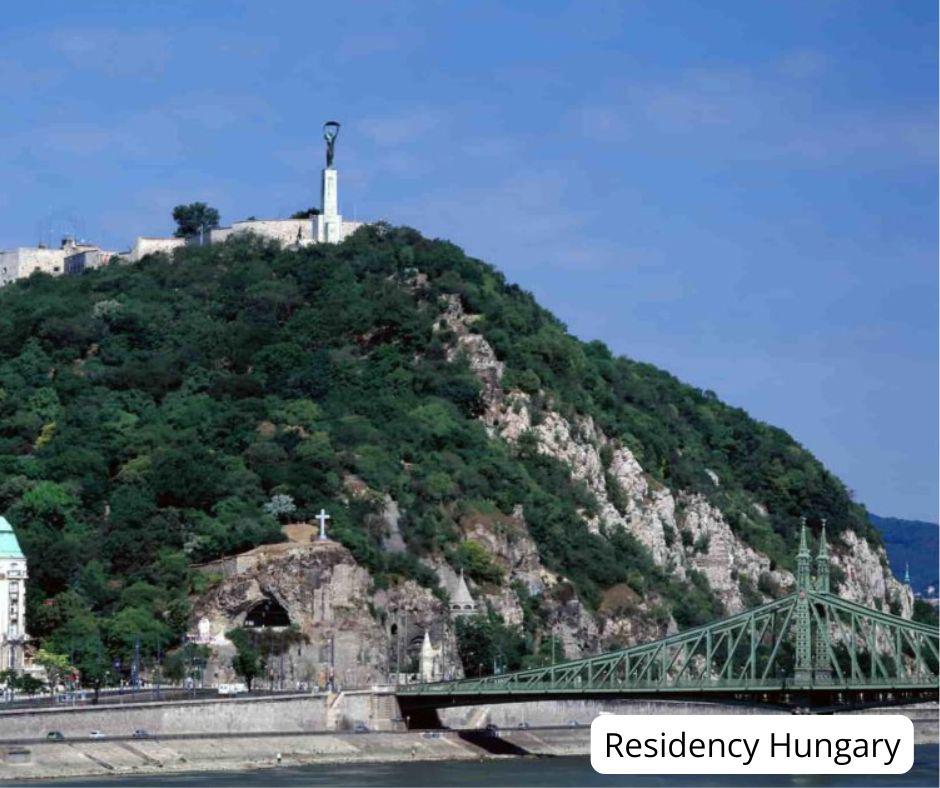One of the biggest attractions of Gellért Hill is the stunning panoramic view it offers of Budapest and the Danube. From the top of the hill, you can admire the entire cityscape, including iconic landmarks such as the Parliament Building, Buda Castle, Matthias Church, and the famous Chain Bridge.
Gellért Hill has been an integral part of Budapest's history since ancient times. It is named after the legendary Bishop Gellért, who was martyred on this hill in the 11th century during an unsuccessful uprising against the pagan Hungarians. The slopes of the hill were inhabited as early as Roman times, and remains of ancient civilizations can still be discovered today, including the ruins of a Celtic settlement from the 3rd century BC, which further enhance the area's charm and mystique.
It is surrounded by the Elizabeth Bridge and the Freedom Bridge and is shared by the 1st and 11th districts. It is easily accessible from the city center.
Main attractions of Gellért Hill
Gellért Hill Cave
A special attraction of Gellért Hill is the Gellért Hill Cave, an underground system of caves and tunnels formed by thermal springs. Visitors can explore part of the cave system, which boasts impressive rock formations, a small thermal spring, and even a chapel carved into the rock.
Citadel
Another attraction of Gellért Hill is the historic Citadel, a 19th-century fortress built by the Habsburgs after the suppression of the 1848 revolution. Today, the Citadel is a popular vantage point, offering stunning panoramic views of Budapest.
Gellért Statue and Waterfall
Perched atop Gellért Hill, the Gellért Statue is a stunning bronze statue that pays tribute to Bishop Gellért, the Venetian bishop who played a crucial role in Hungary’s conversion to Christianity. Erected in 1904, the statue depicts the martyred bishop holding a cross and a church, symbolizing his unwavering faith and commitment to spreading Christianity.
Statue of Liberty
Towering over Gellért Hill, the Statue of Liberty is a powerful symbol of Hungary's fight for independence. Built in 1947, the imposing bronze statue depicts a woman holding a palm leaf, symbolizing victory and freedom.
Cave Church - Sziklatemplom
Situated in the picturesque surroundings of Gellért Hill, the Cave Church is a unique and fascinating religious site that attracts visitors from around the world. The church’s history dates back to the 1920s when a group of Pauline monks decided to make a sanctuary in the natural caves of Gellért Hill. The monks dedicated the church to St. John, a hermit who, according to legend, lived in the caves in the 11th century.
Jubilee Park
Located in the picturesque surroundings of Gellért Hill, Jubilee Park offers a peaceful retreat for those seeking breathtaking views and a bit of history. The park’s elevated position on Gellért Hill offers stunning panoramic views of the Danube and the city skyline, making it an ideal spot for photographers. The park also features a small playground for children, benches for relaxation, and numerous shady areas to escape the sun on hot days.
Gellért Hill Rose Garden
Budapest’s New Jewel To celebrate the city’s 150th anniversary, a beautiful rose garden was created on the picturesque Gellért Hill, offering a fragrant and colorful oasis in the heart of the town. The garden boasts an impressive collection of nearly 3,200 rose bushes, each representing a Hungarian town or region across the border.


